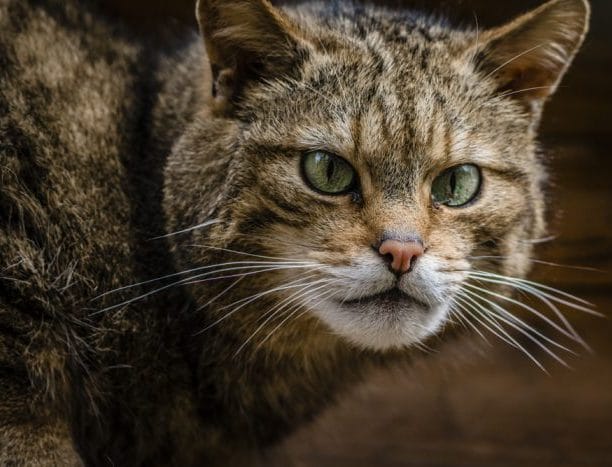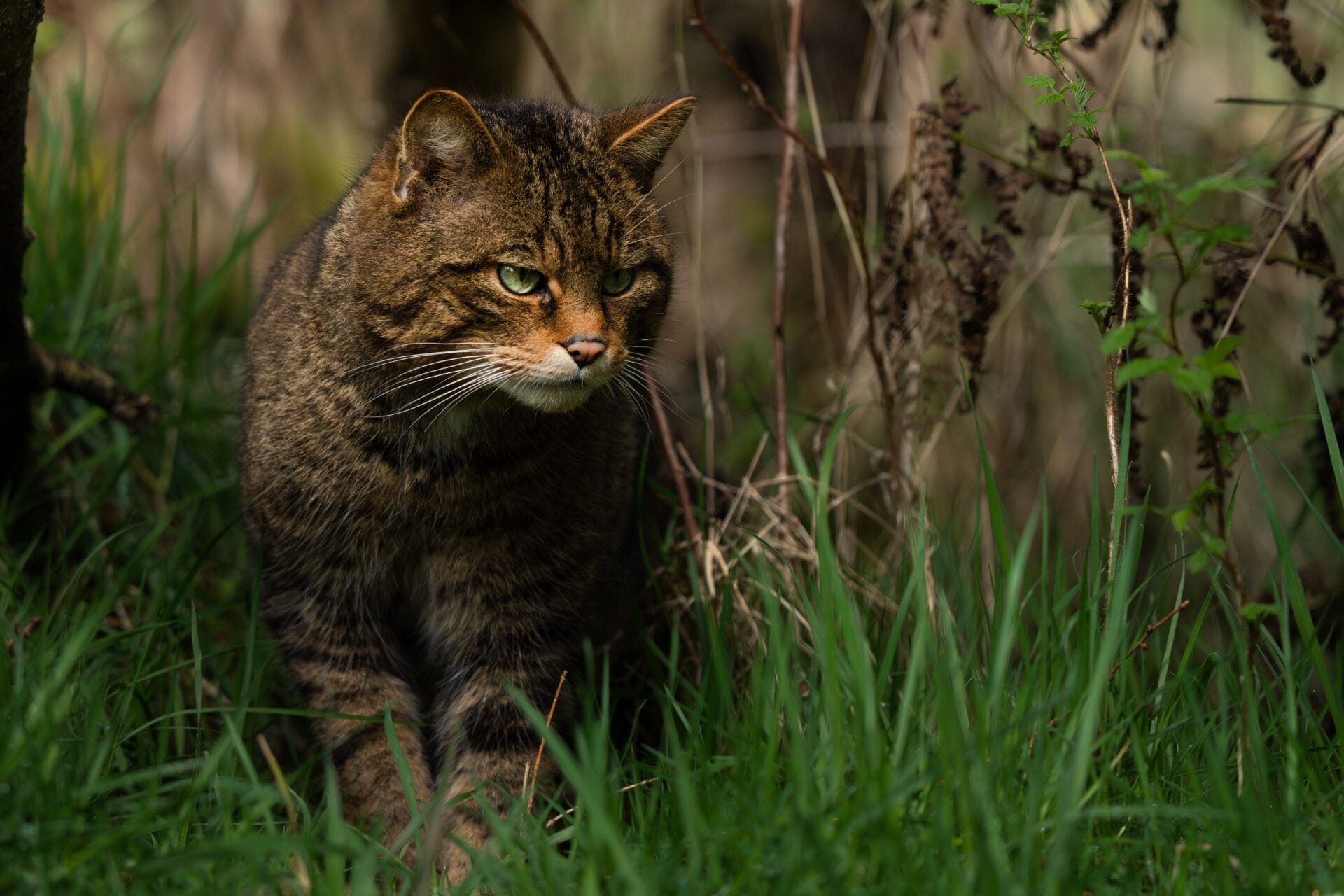The wildcat Felis silvestris silvestris is our last remaining native feline, although without our intervention it would permanently disappear from the wild. Saving this stunning species from extinction in the UK is of utmost importance. Not only is the wildcat a key component of the Scottish ecosystem and iconic symbol of many a Highland clan, these creatures carry the very essence of a wilder Scotland which we are working to restore.
Recently being declared functionally extinct in the wild, the captive breeding of wildcats has secured their future in Scotland. The first year of wildcats being released back into the wild by Saving Wildcats was 2023, with 19 young cats released into the Cairngorms from a state of the art breeding-for-release centre. 7 of the females gave birth in the wild the following summer, which is a really positive sign that the reintroduction is being successful. 9 more wildcats were released in summer 2024, and 16 are likely to be released the following year. The Saving Wildcats project will be completed by 2026, but plans are being made to decide on the next steps to save this iconic species in Scotland.
Appearance
The wildcat has the appearance of a large muscular tabby cat with a broad head and distinct fur pattern. The most obvious visual characteristic of a wildcat is the thick, ringed tail, with a blunt, black tip.

Ecology
Wildcats evolved to live in woodlands, though some have now adapted to occupy more open habitats such as moorland and farmland. As an ambush predator, waiting outside the burrow of rabbit or small rodent is an ideal feeding strategy for the wildcat. Though if presented with the opportunity they will predate birds and reptiles.
Wildcats generally live solitary lives except for during the mating season and when kittens are young. The breeding season is in late winter, generally from January to March and after a gestation period of around 64 days, wildcats give birth to a small litter of usually one to four kittens. At this time of year, male wildcats will expand their range in search of receptive females. After mating male wildcats play no role in raising any kittens, this responsibility lies with the mother. The young cats will disperse at around 8 months old.
History
Wildcats started to recolonise Britain alongside many terrestrial mammals at the end of the last ice age (~9,000 ya) whilst a land bridge between Britain and mainland Europe existed. During the last few thousand years, wildcats carved out a niche for themselves as a medium sized predator, preying mainly upon small mammals. Living alongside bears, wolves and lynx was part of everyday life for the wildcat, though being a great climber with abundant woodland present provided the wildcat many places to hide if necessary. When humans started significantly altering the UKs ecosystems, the wildcat’s fortunes began to change due to habitat fragmentation and hunting.
Threats
Habitat loss and persecution drove the wildcat from much of Britain and into its last refuge in the Scottish Highlands. Because the wildcat population was small and fragmented, hybridisation with domestic feral cats took off. Unfortunately, wildcats still suffer the threats of persecution (illegal trapping and poisoning), roadkill, unhealthy environments and habitat fragmentation.

Further Information
For information on the wildcat conservation in Scotland please follow this link to information about the Saving Wildcats. It is being managed by the Royal Zoological Society of Scotland in collaboration with other project partners.


